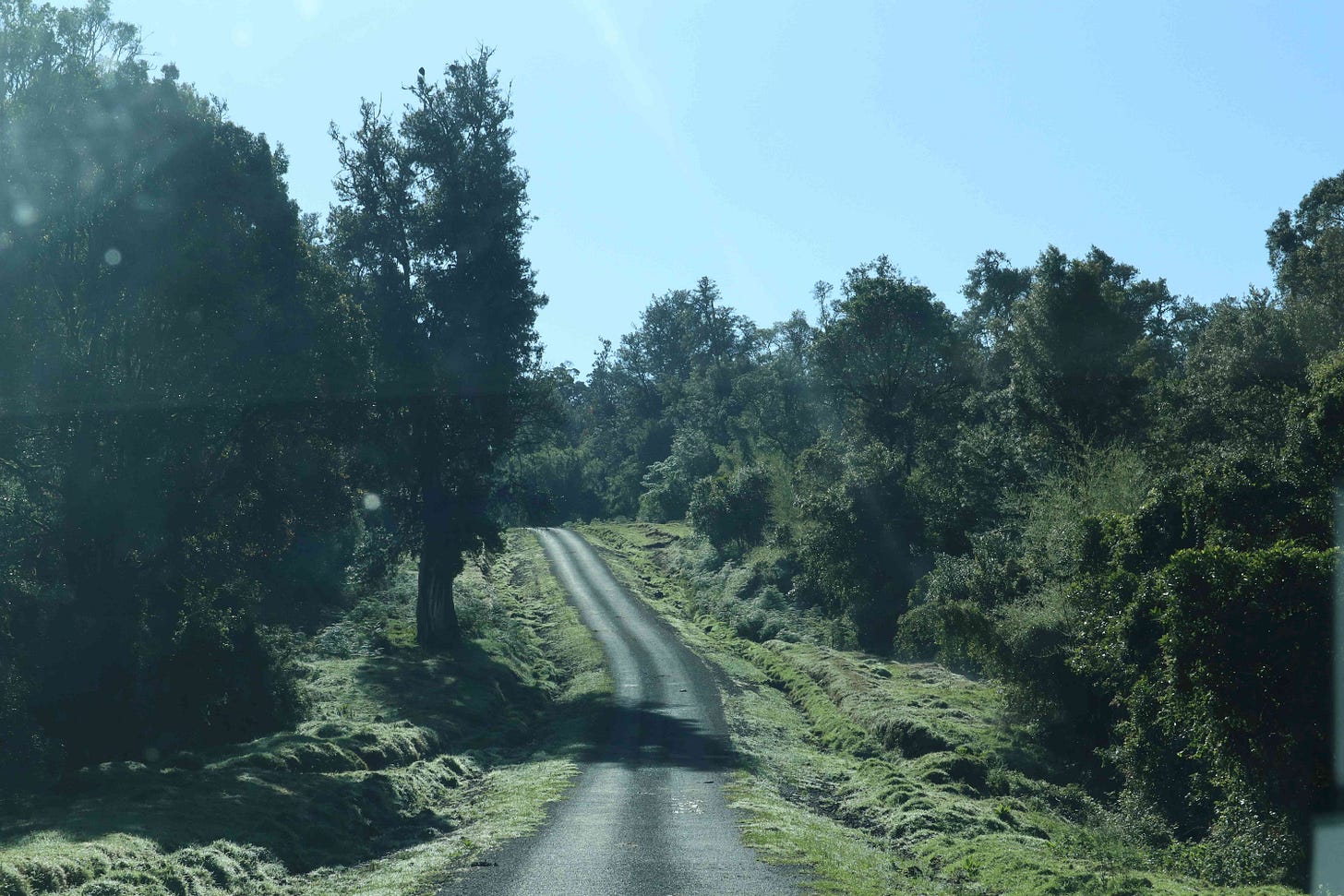Mountain mists
A botanist's delight on Kenya's highest mountain (4 minute preview, 9 minute read)
Before I start, I hope you don’t mind me including some brief thanks to the people who looked after me on this part of my trip. They were all very kind and helpful. I’d especially like to thank Alex from Pollman’s Tours and Safaris, Naro Moru River Lodge and guides George and Charles.
The muscles of my legs are aching, a reminder that today they carried my body somewhere it had never been before. It wasn’t only the location – Mt Kenya – which was new to me. Today I ventured to the highest altitude I’ve ever experienced apart from on a plane, somewhere around 3600 metres, perhaps a little higher. To a New Zealander, that’s high, almost the height of Aoraki Mt Cook, our highest mountain.
My legs could have taken me further, but the mountain was cloaked in alpine mist and was threatening rain. The previous day, there’d been heavy rain in the mid-afternoon, and although the day had started fine, there was a good chance the rainstorm would be repeated. It would make the descent perilous. So, 3600 metres was as far as I went.
Of all the things I wanted to see in Kenya, most of all, I wanted to see alpine plants. I’ll be delighted if I get to see giraffes and zebras, but I’m a botanist at heart, and the wildlife of the Maasai Mara probably won’t top the sight of one of Mt Kenya’s famous giant grounsels in full flower.
Mt Kenya is Africa’s second-highest mountain, after Kilimanjaro. It’s an extinct volcano and the highest of its peaks is at nearly 5200 metres. Since the air gets cooler the higher the altitude, the top of Mt Kenya is cold. It’s cold enough to have permanent ice, in the form of glaciers, although they are now retreating.
The reason Mt Kenya is so fascinating to me is that temperature has a big effect on plant life. As the elevation gets higher, the plants change. Wherever you are in the world, there is a similar pattern. In the lowlands, as long as there is enough rain, trees will grow. At higher elevations, there are different trees. Eventually, they become stunted. Finally, the trees are replaced by lower-growing plants – shrubs and grasses mostly. The point where trees stop is known as the treeline.
In New Zealand, the treeline varies from around 1500 metres in more northern areas to around 1000 metres in the south. But New Zealand is temperate. Kenya sits on the equator, and so the treeline is higher, much higher. Nairobi sits at an altitude of over 1700 metres, and there’s no shortage of trees there. To reach the treeline in Kenya, you need a big mountain, like Mt Kenya. There, the treeline is around 3400 metres.
Today I was able to observe the way the plants changed with altitude on Mt Kenya. In the town of Naro Moru, where I’m staying, there are plenty of acacia trees, including the yellow-barked acacia I first saw in Nairobi. By the time I reached the entrance of Mt Kenya National Park, around 2700m, they had been replaced by Podocarpus trees, known here as podo trees. Back in Nairobi I saw podo trees in the Karura Forest and the grounds of my hotel, but they are a different species at the park entrance.
The podo trees are a big part of the forest above the park entrance, and they give it a familiar look to me. They are related to New Zealand’s totara, kahikitea and rimu, and at a distance their form is similar. Many are draped with a kind of lichen, closely related to one which drapes trees in wetter areas of New Zealand, adding to the familiarity. But the undergrowth is completely different – it is dominated by bamboo.

On the way up, my guide, George, stopped to show me a waterfall, which gave me a chance to observe the undergrowth more closely. I was particularly taken with the Impatiens, related to the busy Lizzies which are popular in gardens in New Zealand. But as I scrambled down the track, clinging to bamboo so I didn’t slip, I saw something which gave me a jolt. A few weeks ago, walking in the Pureora Forest, I was troubled to see patches of African club moss invading. So, when I saw the same plant, there was a moment of dread. Then something clicked in my mind and I realised that I was seeing the plant where it belonged. Dread turned to fascination – I have seldom had the opportunity to observe an invasive species growing where it is native.




